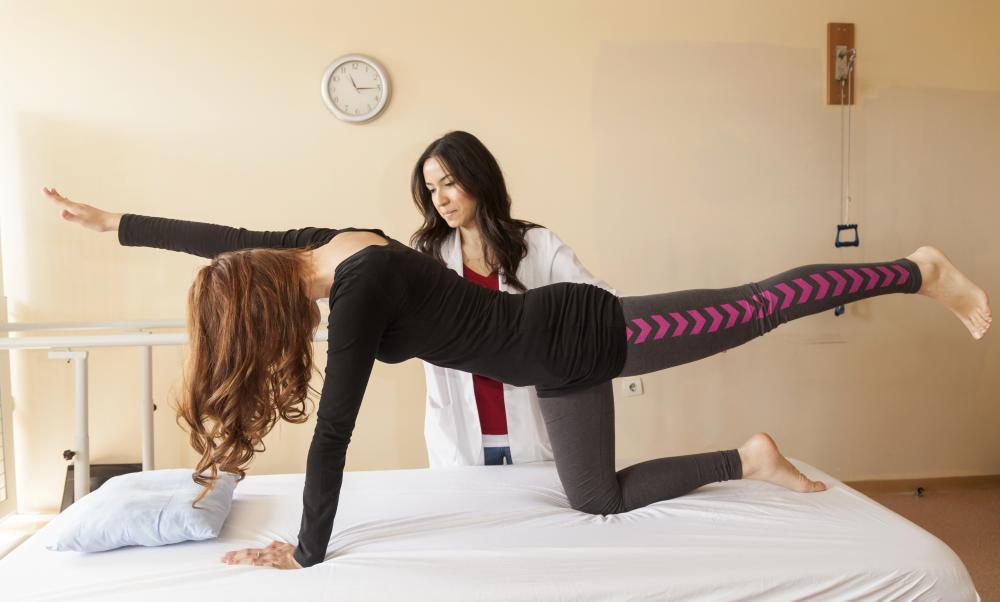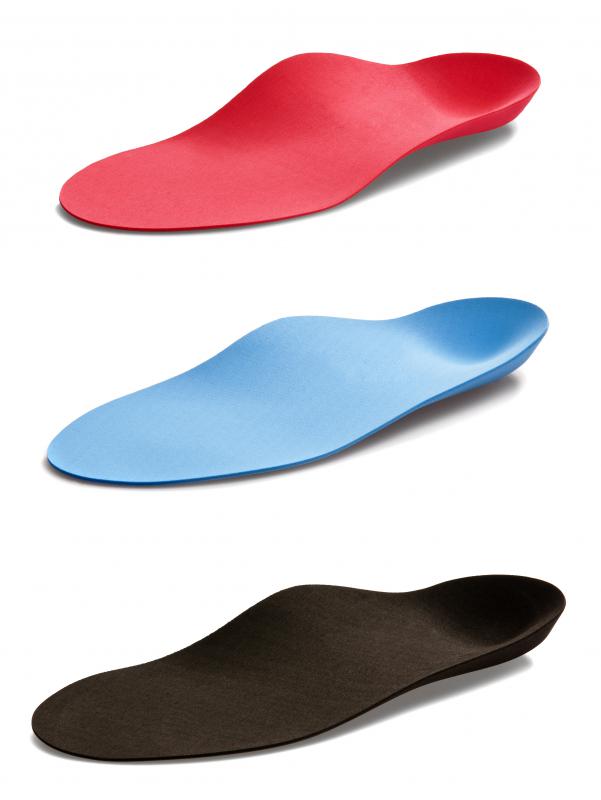At WiseGEEK, we're committed to delivering accurate, trustworthy information. Our expert-authored content is rigorously fact-checked and sourced from credible authorities. Discover how we uphold the highest standards in providing you with reliable knowledge.
What can I do About Heel Spurs?
There are a number of approaches to dealing with heel spurs, small hooks of bone which develop inside the foot. They are closely associated with a condition known as plantar fasciitis, an inflammation of the tendons in the foot often caused by overextension. In order to correct heel spurs, most people treat the plantar fasciitis, in the hopes that this will cause the pain associated with the heel spurs to go away. Treatments vary from simple rest to surgery to remove the heel spur and to treat the underlying plantar fasciitis associated with it.
The development of a heel spur causes pain because it inflames and irritates the surrounding tissues. Therefore, it is very important to relieve pressure on the area. Many people find that a padded shoe insert helps with the treatment of heel spurs, as does arch support. Arch support will also promote healthy pronation, a term used to refer to the rolling movement of the foot. When someone has an abnormal pronation pattern, it can cause painful foot conditions. Many sports stores offer pronation assessments for free, and a podiatrist will also assess your pronation if you make an appointment to discuss foot pain.

Resting and supporting the foot is an important step. Many patients also wear ice packs and splints, in the hopes that these will help to relieve the inflammation. Anti-inflammatory drugs may be taken to reduce the pain associated with the condition, and in some cases doctors may offer cortisone injections. Such injections are usually only undertaken in extreme cases, as some medical problems have been associated with them.

Exercises and stretches to treat the plantar fasciitis associated with the heel spur are also very important. Physical therapy can help, as a physical therapist can teach the patient a series of stretches customized for his or her body. These stretches will relieve pain from heel spurs and plantar fasciitis while developing strength in the foot. Physical therapy can also be used to teach a patient to walk correctly, or to determine which types of shoes, splints, and pads may best help the patient.

In extreme cases, a patient may require surgery to remove the bony protrusion or to release the tightened, painful fascia of the foot. Surgery is considered a last resort, since it can result in considerable pain or more long-term problems, such as collapse of the arch. Doctors will usually discuss surgical options extensively with their patients before proceeding, as it is a serious decision.
AS FEATURED ON:
AS FEATURED ON:















Discussion Comments
The first time I was diagnosed with plantar fascitis was while I was playing college soccer and surprisingly, no one else on the team had developed it
It was relatively easy to clear up with a strict ice massage schedule, stretches, and a heel cup for all of my shoes.
When the plantar fasciitis came back around for the second time, I had been running half marathons for years without a bit of pain until I began to play soccer again for fun, to change up my workout. And boy did it return with a vengeance.
I ended up having to wear a cast boot on the same foot that had the plantar fascitis because of a stress injury on that heel. Even after three weeks in this boot, my plantar fascitis persisted.
However, with orthotics made for my foot inserted into my running shoe, leaving my running shoes on after long runs to continue to support my foot, and finally not wearing so many flip flops did the trick of eliminating my plantar fascitis (nobody has ever told me that flip flops worsen plantar fascitis, in just seemed in my case it did).
@alFredo - That is exactly why I wouldn't recommend anyone try and figure out how to treat plantar fascitis or foot heel spurs at home (I would suggest going to an orthopedist or physical therapist).
But if one does opt to try and research plantar fascitis at home and apply what they have learned, then I think they should be aware of your discussion that there is quite the variety of treatments to help the various lifestyles and foot shapes that led to plantar fascitis.
I know that it is a common occurrence to find that once you have something, you continue to find all of these other people that have the same exact problem.
But what I think is interesting about plantar fascitis is that it really and truly seems to affect all sorts of people.
My orthopedist (I can't believe I even have an orthopedist - even saying that makes me feel a bit old, but I digress...) who works primarily with athletes said it is typically for people who are very active to get plantar fascitis.
And I found this to be true for one of my friends, she has worked out (primarily running) five days a week for at least 5 years and she just developed plantar fascitis.
However, when I researched plantar fascitis when I began to have it, I found that it can also be common in people who are sedentary and overweight.
So if you find you have plantar fascitis, I just wanted to share that there are all sorts of people, with all different lifestyles, who have plantar fascitis.
Post your comments